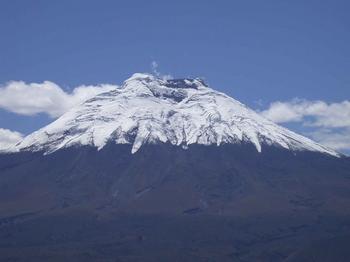Magmatism - Introduction
Magmatism plays a key role in mountain formation, as new ascending magmas produce additional mass and volume to the Earth’s surface and subsurface. Magmas form by partial melting of silicate rocks either in Earth's mantle, the continental or the oceanic crust.
In this chapter different types of magma generation and volcanoes are explained.
Types of magma generation
Three different types of magma generation are considered here: subduction, hot-spot volcanism and magmatism along rift zones.
Volcanoes
The most visible and spectacular products of mountain formation as result of magmatism are without any doubt volcanoes. The resulting type of volcano and explosion is hereby depending of the input of greater depths such as the mass, composition and physical properties of the rising magma and also of its interaction with the surface and near-surface environment. More precisely and detailed, volcanic eruptions are end members of factors such as chemical composition of the magma, viscosity, temperature and gas content and their replenishment rate. Simplified, this spans the variation of magmas types in either 1200ºC degree hot, extremely fluid, heavy/dense, gas-poor type magmas with a low amount of silica (around 50%) to 650ºC “cold”, slow, viscous, less dense and gas rich type magmas with a relatively high amount of silica (around 75%) and all mixtures of compositions and parameters of between these extremes. Nonetheless, inner crustal processes in a magma reservoir area (magma chamber) in a depth of 10-20 km called the magma chamber of a volcano in the continent and ca. 2.5 km in oceanic (hot spot) areas and its still not entirely understood dynamics play also a major role in the generation of magmatic material up to the surface as well as weaknesses in the upper, surface part of the crust. The trigger for eruption may be the ascent of new magma into the chamber from below. As the chamber swells, its roof cracks, allowing gases at the top of the magma to expand and propel the molten rock to the surface.
All ypes of volcano morphologies depend strongly as previously mentioned on their chemistry and different other parameters such as viscosity, eruption type and geodynamic setting. The most obvious landscapes are made up by the huge shield volcanoes making up most of the islands as result of the hot spot activity (e.g. Hawaii or the Galapagos) aqwaiior stratovolcanoes as a result of subduction (e.g. Andes or the Cascades). Besides these mentioned volcanoes, there are up to two dozens more volcanic morphologies of different sizes and chemistry.


